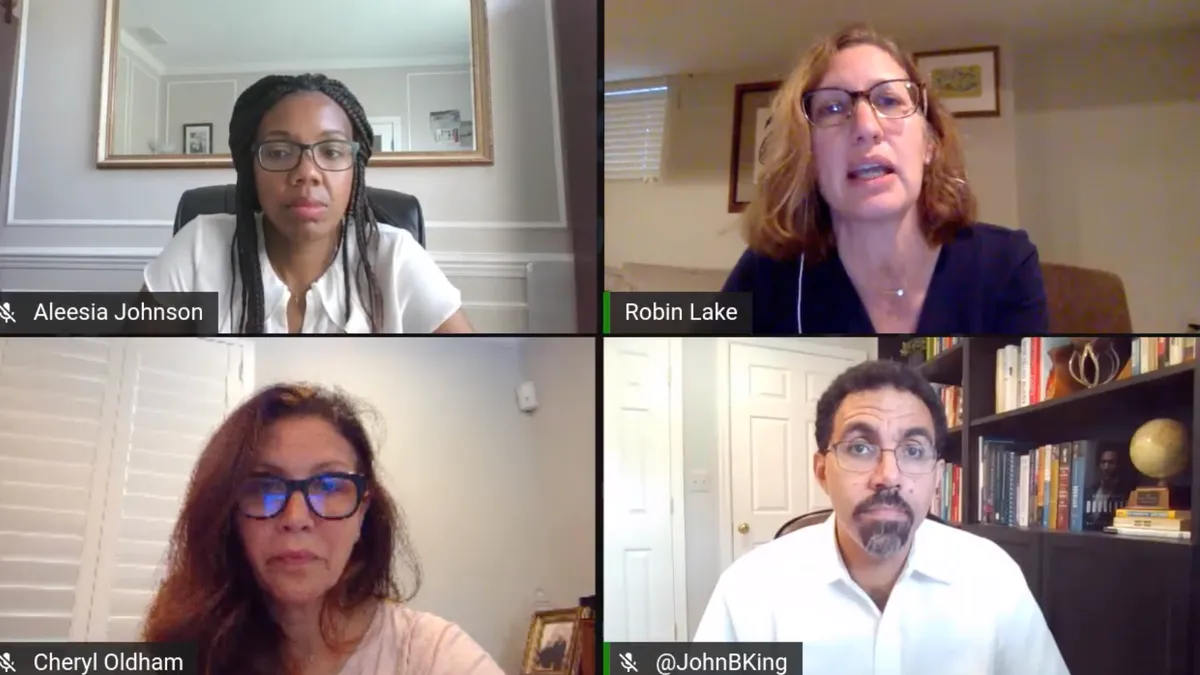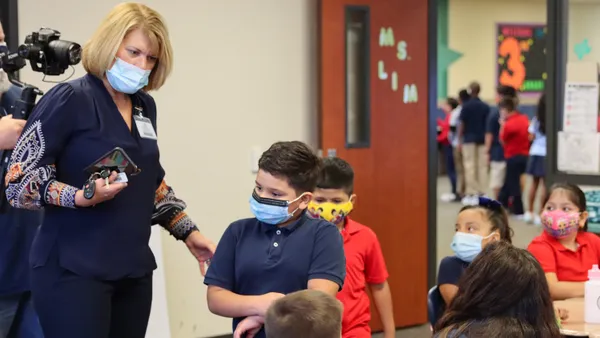Calls on Congress to boost funding for students’ internet access increased Tuesday as John King Jr., president and CEO of The Education Trust, joined Indianapolis Public Schools Superintendent Aleesia Johnson and other speakers to discuss how ongoing connectivity gaps could further complicate school reopening plans for the fall.
“Students will again struggle next year” if they don’t have reliable service, said King, a former U.S. secretary of education during the Obama administration. “These disparities are particularly egregious for folks of color. It’s particularly pronounced for low-income families.”
Organized by nonprofit Common Sense Media — and including Robin Lake, director of the Center on Reinventing Public Education — the media call focused especially on a Democrat-sponsored bill in the Senate that would appropriate $4 billion in E-Rate funding for internet and devices. But Cheryl Oldham, vice president of education policy for the U.S. Chamber of Commerce, said the “amount is all over the place” and could be the $2 billion introduced earlier in the House.
“There is bipartisan acknowledgement … of the need to add some dollars here,” she said. “How it gets constructed is still to be determined.” She added there isn’t a “tremendous amount of urgency” and that action on another relief package might not take place until before Congress dismisses for the August recess.
King’s comments were reinforced Tuesday by survey results from AASA, The School Superintendents Association, showing 60% of superintendents say their students “lack adequate internet access at home,” listing that gap as a barrier to implementing distance learning this fall. More than 90% of the respondents — 501 from 48 states — said students have been depending on “district-owned laptop, tablets and hotspots” to connect to classes and complete schoolwork.
And 94% said they are not ready to announce exactly when their schools will reopen or get back to in-person instruction.
“The dynamic has changed,” Oldham said. “This used to be a homework gap issue. Now it’s the only way that you are able to be educated.”
A ‘pick-and-choose game’
Johnson described her district’s efforts since March to move from a 3:1 device district toward every student having access. The district prioritized getting devices and hotspots to high school students so they could complete the courses they need for graduation.
“We literally turned into a logistics company overnight,” she said, but added leaders are now focusing on universal access before school begins in August. “We are not going to go into the 2020-21 school year having to play this pick-and-choose game with our students.”
King and Oldham noted internet access is also necessary for students to apply for college, jobs or internships, and financial aid. A separate bill in the Senate would direct $1 billion for internet access and devices toward colleges and universities serving low-income students.
King also made references to how governors and district leaders are already using funds provided through the Coronavirus Aid, Relief, and Economic Security Act.
According to governors’ applications, the majority of states are applying the almost $3 billion they’ve received in the Governor’s Emergency Education Relief Fund toward devices and connectivity for students.
“We’ve got to hold our leaders accountable,” he said. “We’ve got to hold the cable companies accountable as well.”
He compared the current challenge to the one the U.S. faced during the Great Depression, when Congress created the Tennessee Valley Authority, in part, to carry electricity to that region.
“We have to have an ambitious response to this crisis,” he said. “This is one of those pivot points for the country.”














